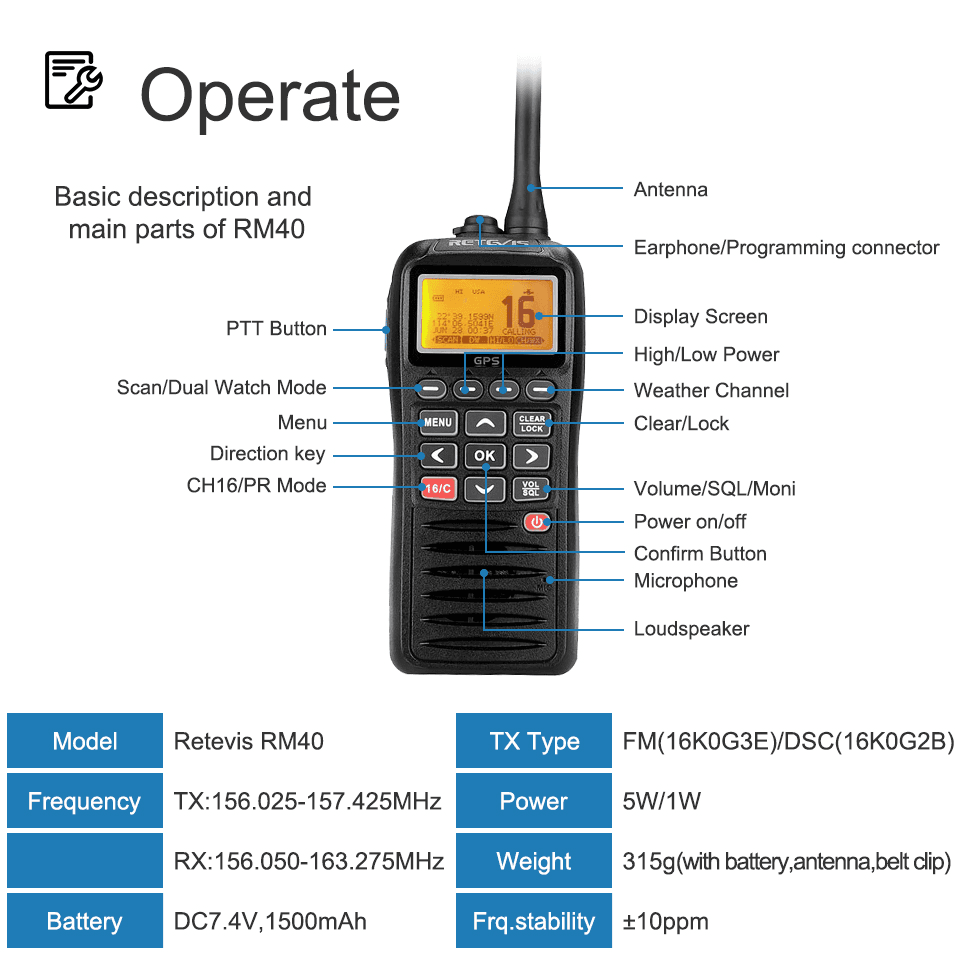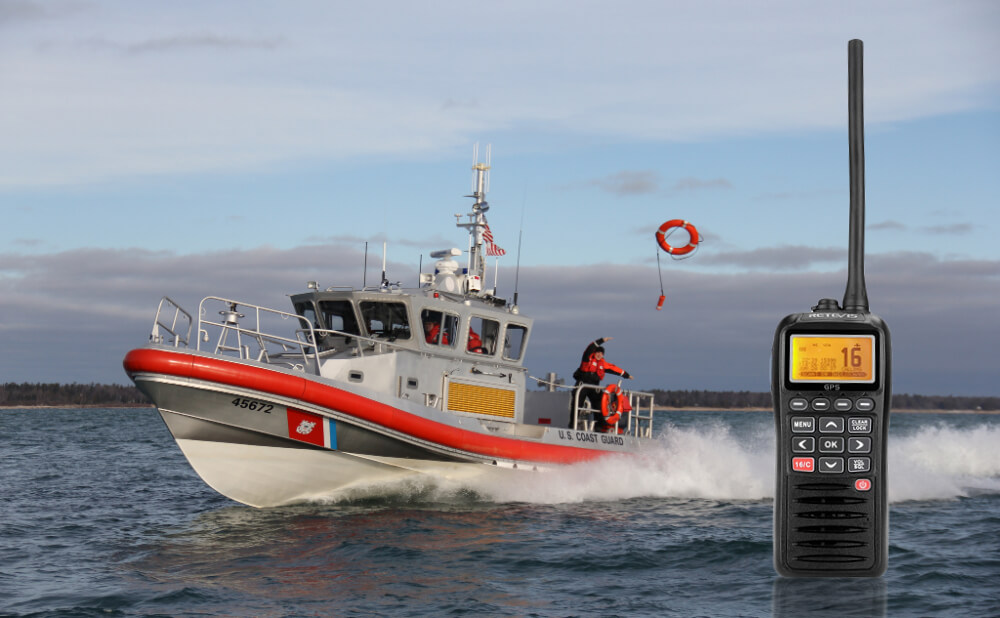VHF radio for boat are used for a wide range of communications, from safety alerts, to navigational advisories, to weather forecasts. Knowing the basics of how to use a marine VHF radio is essential for all seafarers. This article will provide an overview of the basics of marine radio use, including the benefits of VHF radios, how to operate them, basic channels and how to choose a right VHF radio.
The Benefits of a VHF Radio for Boat
- It can save lives in an emergency. It is a “one to many” communication system. If you broadcast on emergency Channel 16 for help, other VHF radios turned on in your area will hear you.
- It has a long lifespan, and are easy and quick to use.
- Most are fully waterproof, suitable for the harsh marine environment.
Steps to Use a VHF Radio for Boat
- Make sure you are on the correct channel.
- Adjust “Squelch” control as low as possible without hearing static or “white noise”.
- Push the button on the microphone to transmit (send).
- Speak in a normal voice.
- Take your finger OFF the button to hear the other person.
Operate on the Correct Channels
- Channel 16 – For distress, safety and establishing initial communication only.
- Channel 22 – Used by the Coast Guard for extended communication.
- Channel 9 – For initially hailing and establishing communication with other boats.
- Channels 68, 69, 71 and 72 – For general communication between any boats.
- Channels 1, 7, 11, 18, 19, 63, 67, 79 and 80 – Working channels for commercial vessels only.
- W1 through W10 – For receiving weather broadcasts.
- Channel 13 – For “bridge-to-bridge” navigational communication between two vessels.
Choose a Right VHF Radio for Boat
It is these specifications below that will determine the best radio for you.
- Water resistance – This is obviously important when using a handheld radio.
- Floatability – If the radio is dropped on the surface, it can be retrieved.
- GPS receiver – this feature allows you to relay your location to rescue agencies
- Weather Alerts-You observe the weather situation quickly with this function.
- Build Quality – Higher end radios get better voice quality and better background noise filtering.
- Digital Selective Calling (DSC) – This is the radio’s ability to transmit an emergency signal to all other radios in its location, as well as its coordinates.
- Portability-If caught in a storm, rain, or flood, your boat could lose power, and the mechanics would fail. Therefore, the portable handheld option would work.
Combining the above points, we will highly recommend RM40, which is a high-end marine VHF radio with strong comprehensive functions. It features Built-in GPS, Built-in DSC, MOB Function, Dual/Triple-watch Functions, Weather Channel Receive and Favorite Channel Function. It is suitable for a little coastal fishing, longer cruising trips and navigating river systems both on smaller boats and bigger ones.

Thank you for reading this blog! If you have any questions, please leave your comments below. We are looking forward to your comments!
Related Blog: TOP 5 RETEVIS VHF MARINE RADIOS IN 2022
Visits: 11

